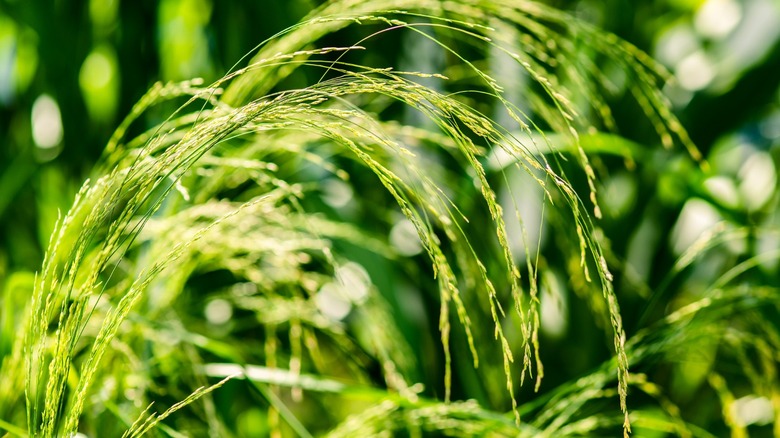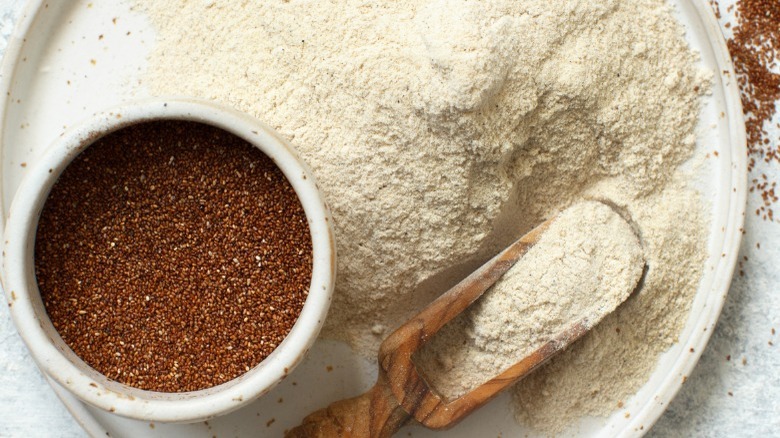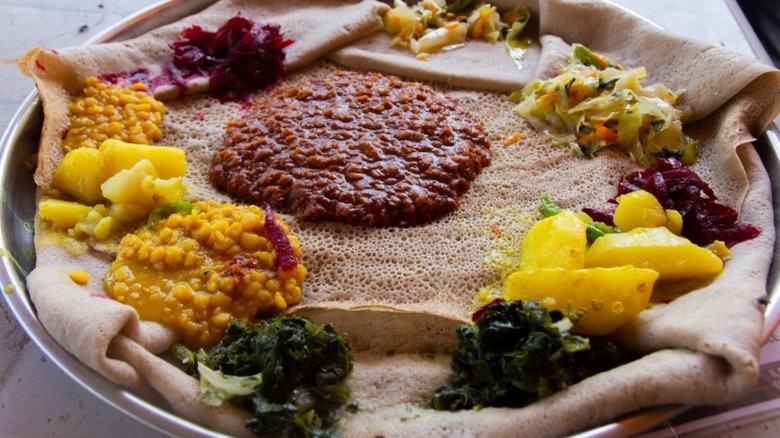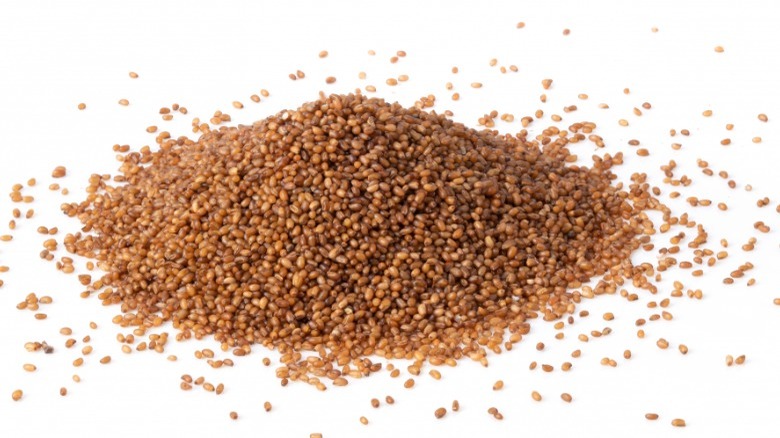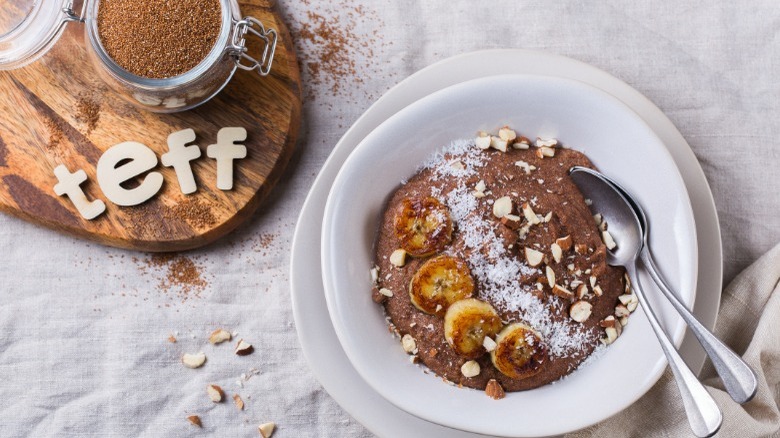Teff: A Nutritious, Gluten-Free Grain
Teff (Eragrostis tef) has a remarkable history that dates back thousands of years. This grass plant with its tiny seeds has been cultivated in Ethiopia since ancient times. It is part of the Poaceae family, which includes 10,000 species of grass. The name teff is thought to come from the Amharic word for "lost," perhaps inspired from the plant's small and easy-to-lose seeds.
Farmers grow teff for its poppy-seed-sized grains. It's an impressively hardy plant that can grow in a number of different environments, often in places where other plants fall to thrive. And because the ancient grain's seeds are so small, only a pound of them are needed to plant an entire acre. Teff is also a fast-growing grain, taking only 36 hours before it starts to sprout. And it has been drawing more attention in recent years because it can be ground into a flour, which is naturally gluten-free.
What does teff taste like?
While it usually has a nutty flavor, how teff tastes can vary depending on which variety you try. The light-colored teff -– often marketed as ivory –- can be a bit sweet and more subtle in flavor. The darker variety, usually labeled as brown, has a more earthy taste. In either case, teff has a delicate enough flavor allowing the grain to be used in both savory and sweet recipes.
Some people associate teff with a tangy flavor because teff flour is used to make an Ethiopian bread called injera. But that distinctive taste comes from the way that the bread is made, and not inherently a part of teff itself. To make this bread, teff flour, along with naturally occurring yeast, is allowed to ferment. It develops into a sourdough batter, which is then cooked in a pan. The resulting injera is easily recognizable by the numerous air bubbles that mark the surface of the spongy bread.
How to cook with teff
Teff can be cooked as a whole grain or it can be ground into a flour. One of the simplest ways to prepare teff is to make a porridge from the seeds themselves. Some recipes call for lightly toasting the seeds before cooking to enhance teff's naturally nutty taste. Then you simply combine one cup of teff to three cups of water in a saucepan and bring it up to a simmer. It will take about 15 to 20 minutes to cook. Some compared the texture of teff porridge to polenta, and the porridge can be seasoned to be sweet with the addition of maple syrup or sugar and cinnamon, or made savory with salt and other spices. Teff can also be added to soups and stews to make them heartier.
Teff flour is traditionally used to make injera, but it also has a number of other baking applications because of its gluten-free properties. Teff flour can be used in recipes for pancakes, breads, and cookies. Just remember that the texture may be a bit different than baking with regular wheat flour. There are also some dried pastas made from teff that you could try with your favorite sauce.
Where to buy teff
Teff may not be featured along with the other flours in the baking aisle of your local market, but it is relatively easy to locate online or at your local health food store. Bob's Red Mill, the maker of many specialty flours and other baking essentials, even sells its whole grain teff and teff flour through some supermarket chains. The Teff Company, which grows teff in Idaho, offers its products directly to consumers through the company's website.
Be aware that teff usually comes with a higher price tag. While it can be an easy crop to grow, teff is difficult to harvest because of its incredibly small seeds. So while it's possible to get five pounds of Gold Medal all-purpose flour for close to $3.64, you'll need to spend more for teff. For example, a 20 ounce bag teff flour from Bob's Red Mill will cost $11.75. The same company's whole grain teff is a bit cheaper at nearly $8.69 for 24 ounces. Some think that the nutritional benefits of teff are worth the extra cost.
Nutritional information about teff
There are many reasons why some people have embraced teff as a health food. It's rich in nutrients and has an impressive amount of fiber and protein. In one cup of the gluten-free grain, there is 7.1 grams of fiber and 9.8 grams of protein, according to Nutrition Value. It is also an iron-rich food with 5.2 milligrams per cup. Teff provides a good amount of calcium and potassium as well: 123 milligrams and 270 milligrams per cup respectively.
There are other nutrients found in teff as well, with some sources suggesting that it is high in magnesium and zinc (per Healthline). It also has an amino acid called lysine that helps the body take in calcium and produce proteins, enzymes, and hormones. One challenge of teff is that it also contains phytic acid, which may hamper the absorption of nutrients. But if the teff is fermented, as it is the process of making injera, the amount of phytic acid will decrease (via WebMD).
